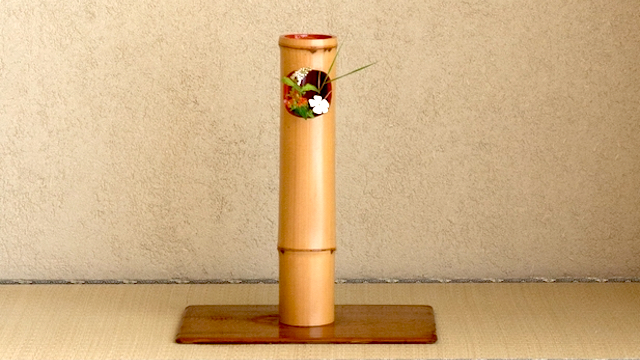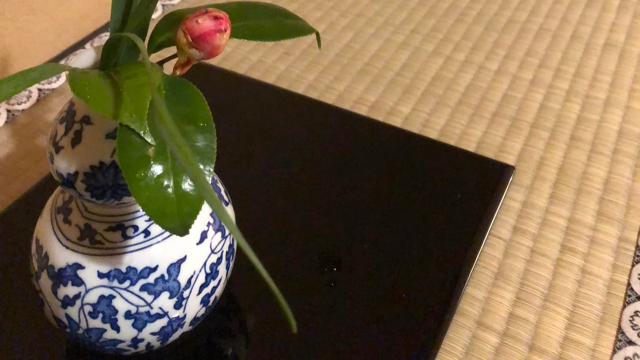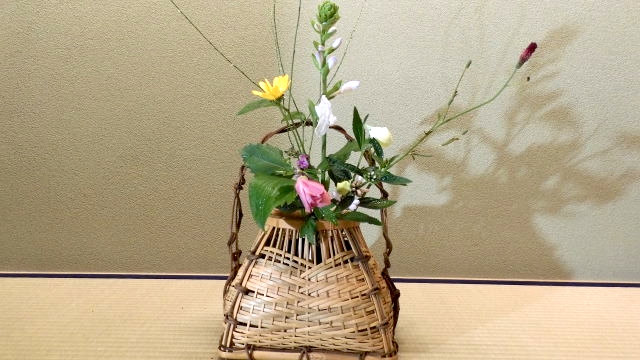
Takehanare is a flower vase made by cutting bamboo. In 1590, when Sen no Rikyu followed Hideyoshi's attack on Odawara, he ordered bamboo from Izu Nirayama in Yumoto, Hakone. It is a common theory to start with something.
At this time, Rikyu cut the single ``Onjoji'', ``Ongyoku'', ``Shakuhachi'' shakuhachi, and ``Yonaga'' double-cut ( It is said that he also made 'Yonaga', which he presented 'Shakuhachi' to Hideyoshi, sent 'Onkyoku' to Oribe, made 'Onjo-ji Temple' a souvenir to Shoan, and used 'Yonaga' himself. The name "Yonaga" can be seen in the January 19th meeting of the Hyakukaiki.
"Tennojiya Kaiki" is also included in the meeting record. After the first sighting of "Kake no Toko no Kake" at the Kuwayama repair morning meeting on July 9, 1590, the bamboo vase began to appear frequently. .

Metal vases and Chinese ceramic vases are considered to be of high rank, followed by Japanese glazed and unglazed ceramic vases.
陶磁器
Madake bamboo is often used and is suitable for handicrafts. You can enjoy the expression of shapes and individuality such as "sun-cut", "single-cut", and "double-layered" like shakuhachi, using bamboo knots, distortion and stains.
竹
Basket-shaped flower vases made of woven bamboo, rattan, and wisteria vines are collectively called 'kagohana-ire'. (Bamboo baskets, rattan baskets, etc.)
籠